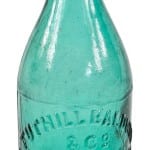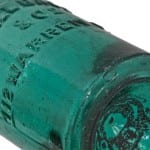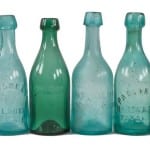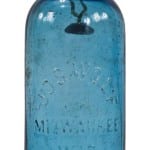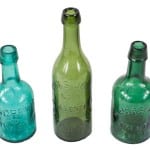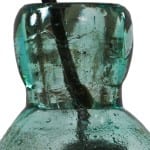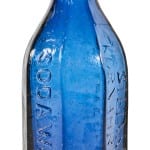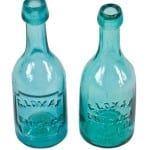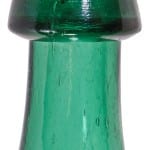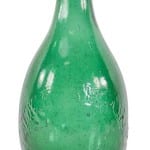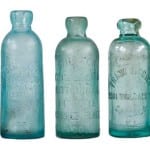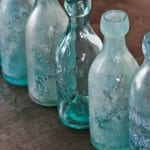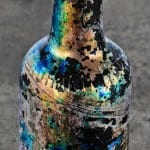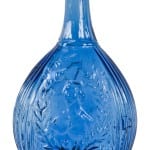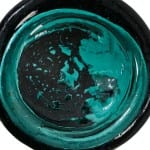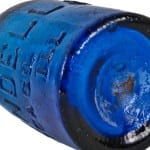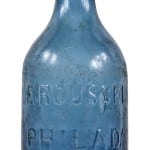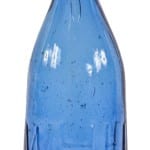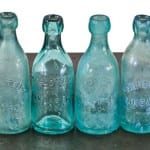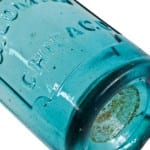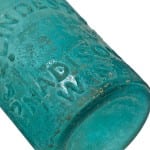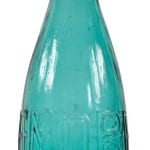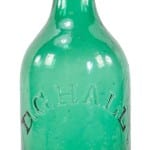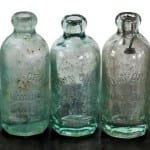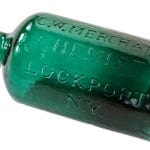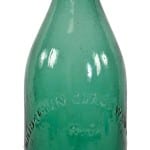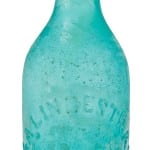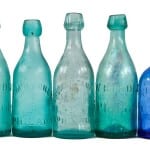an endless fascination with the morphological characteristics and crudities of 19th century bottles
This entry was posted on February 10 2015 by Eric
identifying any and all morphological properties of these mid-19th century bottles (see below) remain difficult to nail down, considering that the experimental fabrication methodologies were performed by the lungs and hands of the glassmith or blower, apprentices and children under dire conditions were output meant everything.

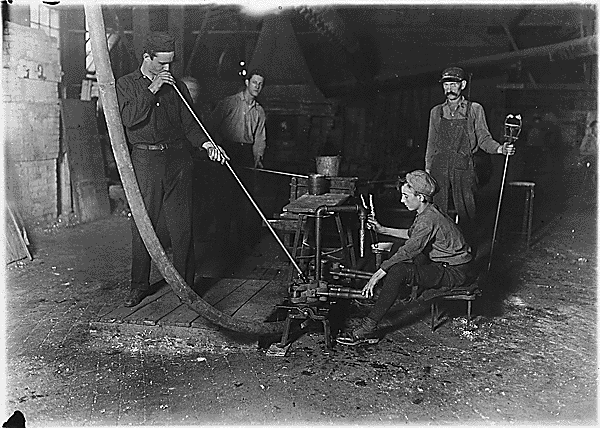
granted, the carved wood and cast iron two, three and four-part hinge molds, along with the insertion of customized slug plates for example, did contribute to some consistency during the bottle making process during the latter half of the 19th century, but if you look closely at two hand blown glass bottles made by or for the same bottler, you can easily tease out differences in color, applied lip, embossed lettering (i.e., location, size, style) and so on.
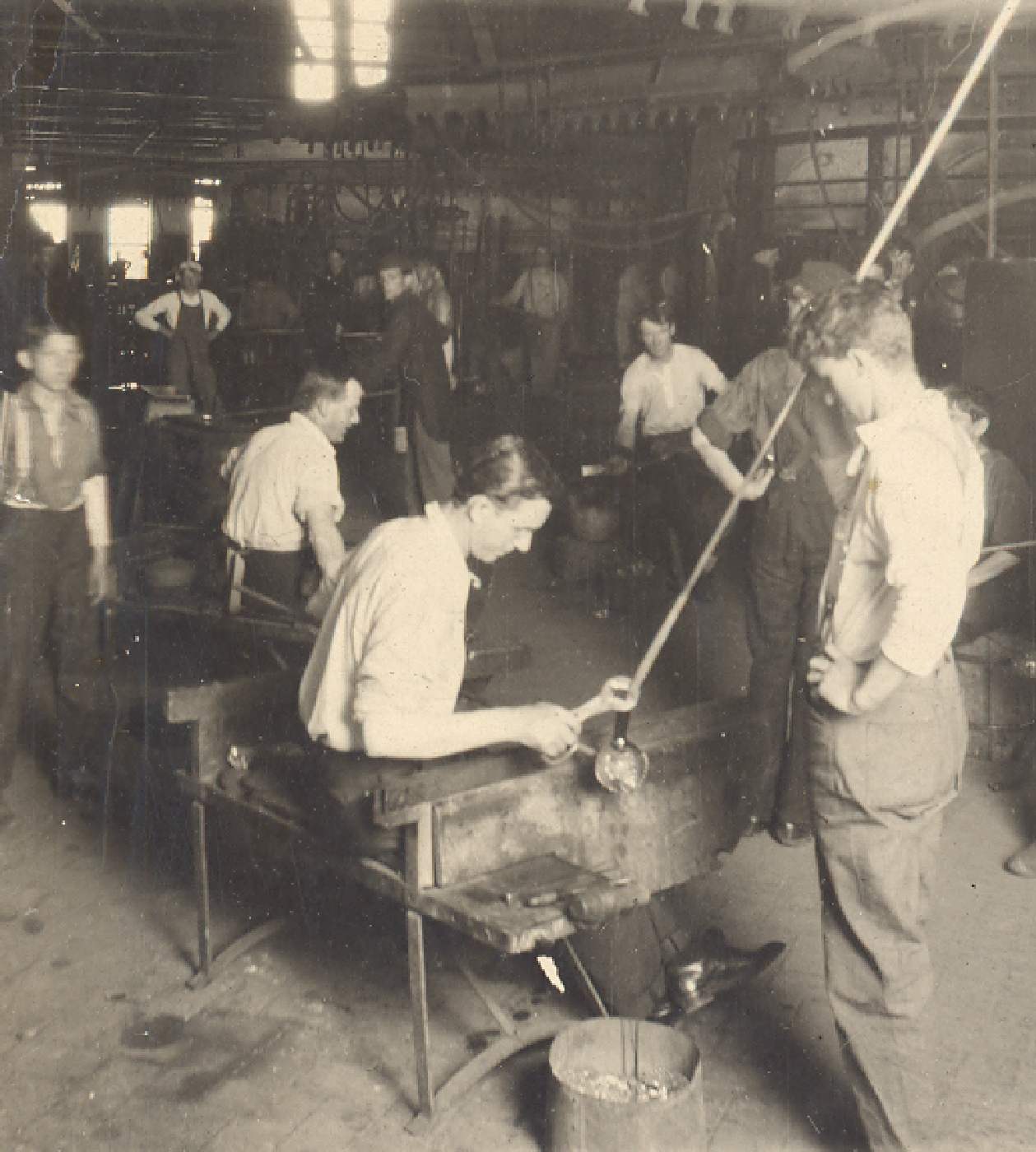
i've quickly discovered that riding out this bottle identification learning curve takes time and patience, which is sometimes frustrating in some respects, but just the process of discovering and documenting distinctive marks, shapes, and especially colors of one antique american bottle after another, has been greatly satisfying in terms of the "bigger picture."
each and every day i learn something new in the realm of bottle identification.
the gallery below shows a wide range of 19th century soda and/or mineral water bottles fabricated primarily for bottlers in chicago, philadelphia, new york city and so on. the crudities and subtleties in glass color are seemingly endless.
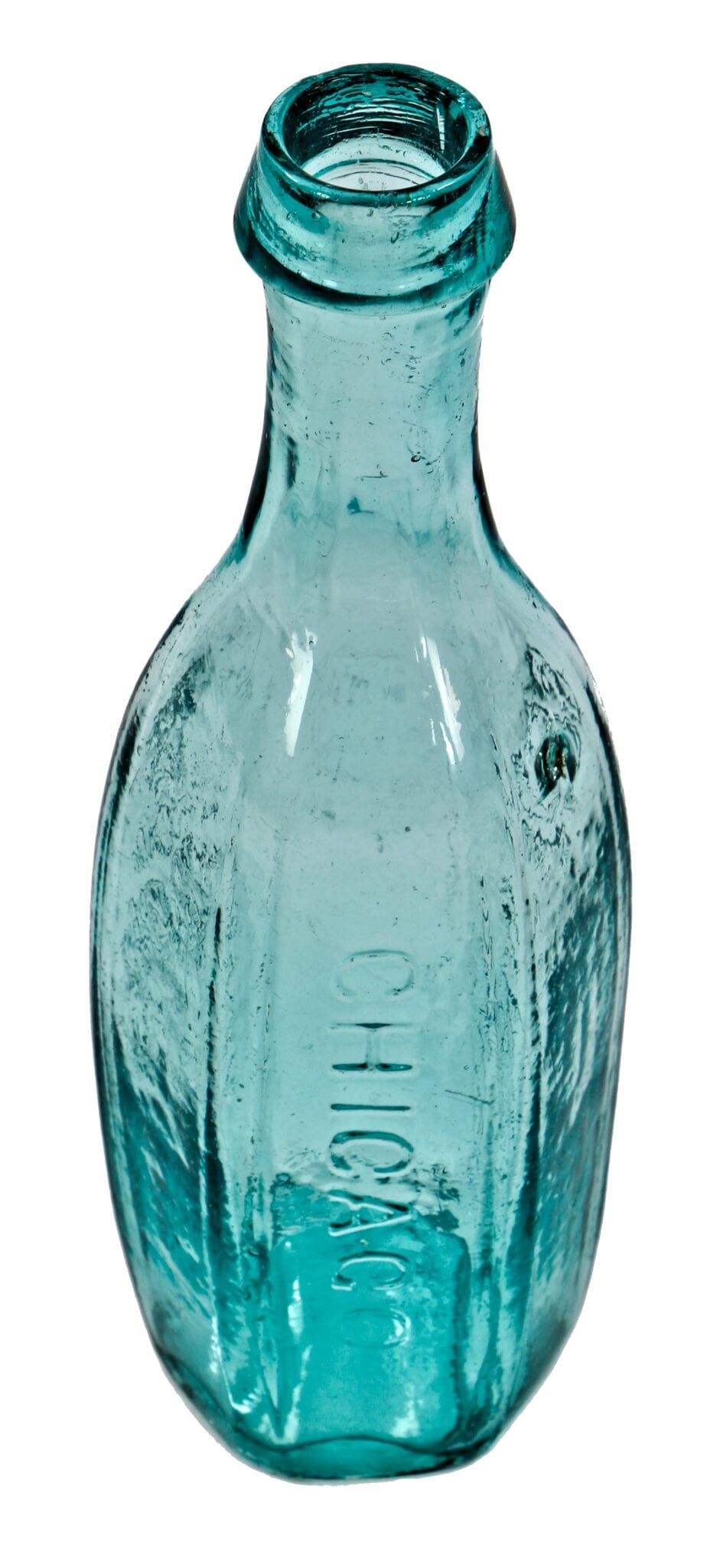
This entry was posted in , Miscellaneous, Bldg. 51, New Products, New Acquisitions & Bldg. 51 Feed on February 10 2015 by Eric
WORDLWIDE SHIPPING
If required, please contact an Urban Remains sales associate.
NEW PRODUCTS DAILY
Check back daily as we are constantly adding new products.
PREMIUM SUPPORT
We're here to help answer any question. Contact us anytime!
SALES & PROMOTIONS
Join our newsletter to get the latest information

